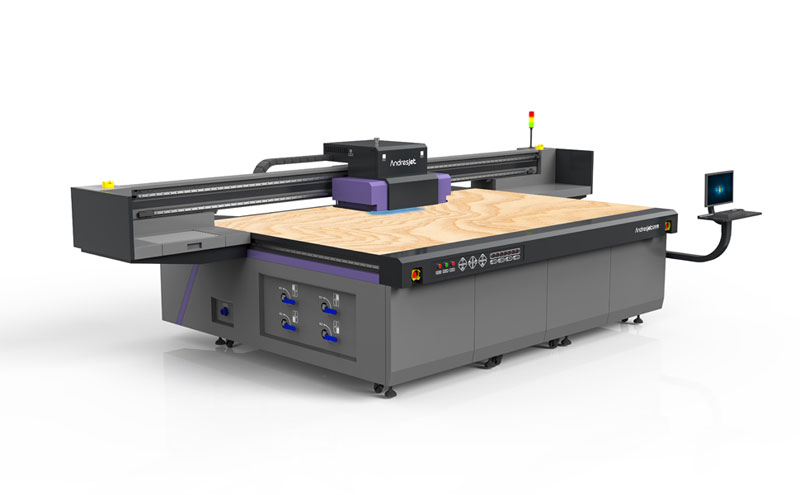What Is the Difference Between Solvent and UV Curing in Flatbed Printers?
What Is the Difference Between Solvent and UV Curing in Flatbed Printers?
Flatbed printers have revolutionized the way we approach printing, especially in large-format and industrial applications. These printers offer versatility, precision, and the ability to print on a wide range of materials. Two key technologies that have significantly impacted the flatbed printing industry are solvent and UV curing systems. Understanding the differences between these two curing methods is crucial for selecting the right printer for specific applications and ensuring optimal print quality.

Solvent Curing: A Traditional Approach
Solvent-based inks have been a staple in the printing industry for decades. They are known for their versatility and ability to produce vibrant, durable prints. Solvent inks consist of pigments or dyes dissolved in a solvent, which is typically a volatile organic compound (VOC). When these inks are applied to a substrate, the solvent evaporates, leaving the pigments or dyes behind to form the image.
In flatbed printers using solvent inks, the curing process is primarily driven by evaporation. As the ink is deposited onto the material, the solvent starts to evaporate, carrying away heat and helping the ink to dry. This process can be accelerated through the use of heaters or fans, which increase the temperature and airflow around the printed material. However, complete curing can take several hours or even days, depending on the ink formulation and environmental conditions.
One of the main advantages of solvent inks is their compatibility with a wide range of materials, including plastics, vinyl, paper, and even some textiles. They also offer good adhesion properties, making them suitable for outdoor applications where durability is key. Additionally, solvent inks are known for their ability to produce deep, rich colors and sharp lines, making them a popular choice for high-quality graphics and signage.
However, solvent inks do have some drawbacks. The evaporation of solvents releases VOCs into the air, which can be harmful to both the environment and human health. This has led to stricter regulations on the use of solvent-based inks in many areas. Furthermore, the curing process can be relatively slow, and prints may need to be handled carefully until they are fully dry to avoid smudging or damage.
UV Curing: A Modern Innovation
UV curing, on the other hand, is a more recent technology that has gained popularity in the flatbed printing industry due to its speed and environmental benefits. UV-curable inks contain photoinitiators that react when exposed to ultraviolet (UV) light. When these inks are applied to a substrate, they remain in a liquid state until they pass under a UV lamp, which triggers the curing process.
The UV light causes the photoinitiators in the ink to form cross-links, transforming the liquid ink into a solid polymer network in a fraction of a second. This instant curing allows for immediate handling and finishing of the printed material, significantly reducing production time. UV curing also eliminates the need for solvents, making it a more environmentally friendly option.
One of the key advantages of UV curing is its speed. Prints can be fully cured and ready for use immediately after printing, making it ideal for high-volume production environments. UV inks also offer excellent adhesion to a wide range of substrates, including those that are difficult to print on with solvent inks, such as certain plastics and metals.
UV-curable inks are known for their durability and resistance to fading, making them suitable for outdoor applications where long-term performance is critical. They also offer a wide color gamut and high print resolution, allowing for the reproduction of intricate details and vibrant colors.
However, UV curing does have some limitations. The initial investment in UV-curable inks and equipment can be higher compared to solvent-based systems. UV inks may also be more sensitive to temperature and humidity during storage and handling, requiring careful management to ensure optimal print quality.
Comparing Solvent and UV Curing in Flatbed Printers
When considering solvent and UV curing in flatbed printers, several factors must be taken into account:
Environmental Impact: UV curing is generally considered more environmentally friendly due to the lack of VOC emissions. Solvent-based inks, on the other hand, release VOCs during the curing process.
Curing Speed: UV curing offers significantly faster curing times, allowing for immediate handling and finishing of prints. Solvent-based inks require longer curing times, which can impact production efficiency.
Substrate Compatibility: Both solvent and UV-curable inks offer good adhesion to a wide range of materials. However, UV inks may have an advantage when printing on difficult substrates such as certain plastics and metals.
Print Quality: Both ink types can produce high-quality prints with vibrant colors and sharp lines. UV inks may offer better resistance to fading and outdoor elements, while solvent inks are known for their deep, rich colors.
Cost: The initial investment in UV-curable inks and equipment is generally higher than that of solvent-based systems. However, the faster curing times and potential for reduced ink consumption may offset these costs in high-volume production environments.
Regulations: The use of solvent-based inks may be subject to stricter regulations due to VOC emissions. UV curing, with its lack of VOCs, is generally more compliant with environmental regulations.
Conclusion
In summary, both solvent and UV curing play important roles in flatbed printing, each with its own set of advantages and limitations. The choice between these two technologies ultimately depends on the specific requirements of the application, including print quality, production speed, substrate compatibility, environmental considerations, and budget. As the printing industry continues to evolve, advancements in both solvent and UV-curable inks will further shape the capabilities of flatbed printers, offering even greater versatility and performance for a wide range of applications.
